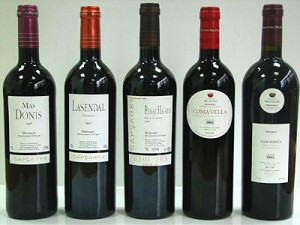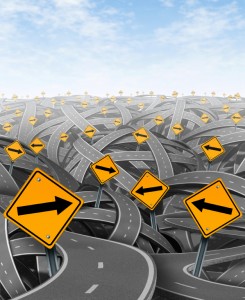Curmudgeons and Critical Thinking

My brain thinks it so it must be true.
I don’t consider myself a curmudgeon. But every now and then my System 1 takes off on a rant that is entirely irrational. It’s also subconscious so I don’t even know it’s happening.
My System 1 wants to create a continuous story of how I interact with the world. Sometimes the story unfolds rationally. I use solid evidence to create a story that flows logically from premise to conclusion.
Sometimes, however, there’s no solid evidence available. Does that stop my System 1 from concocting a story? Of course not. I simply make up a story out of whole cloth. The story may well be consistent in its internal details but may also be entirely fictional. I use it to satisfy my need for a comforting explanation of the world around me. In this regard, it’s no different from a child’s bedtime story.
Though I refer to it as System 1, it’s actually my left brain interpreter that does the work. According to Wikipedia, “…the left brain interpreter refers to the construction of explanations by the left brain in order to make sense of the world by reconciling new information with what was known before. … In reconciling the past and the present, the left brain interpreter may confer a sense of comfort to a person, by providing a feeling of consistency and continuity in the world. This may in turn produce feelings of security that the person knows how “things will turn out” in the future.”
Apparently, our desire for “feelings of security” is deep and strong. So strong, in fact, that our left brain interpreter may create a “contrived” story even in the absence of facts, data, and evidence. While the interpreter often interprets things logically, it “…may also enhance the opinion of a person about themselves and produce strong biases which prevent the person from seeing themselves in the light of reality.”
How often does the interpreter create completely contrived stories? More often than you might think. In fact, my left brain interpreter took off on a flight of fancy just the other day.
Suellen and I were driving to an event at the University of Denver. We were running a few minutes late. We were on a four-lane boulevard where the speed limit is 30 miles per hour. But most people drive at 40 mph because the road is broad and straight. We got stuck behind a Prius that was driving at precisely the speed limit. Here’s how my left brain interpreted the event:
Damn tree-hugger in a Prius! Thinks he’s superior to the rest of us because he’s saving the planet. He wants to keep the rest of us in line too, so he’s driving the speed limit to make sure that we behave ourselves. What a jerk! Who does he think he is? Doesn’t he know it’s rush hour? What gives him the right to drive slowly?
That’s a pretty good rant. But it has nothing to do with reality. I didn’t know anything about the driver but I still created a story to connect the dots. The story followed a simple arc: he’s a jerk and I’m an innocent victim. It’s simple. It’s internally consistent. It enhances my opinion about myself. And it’s completely fictional.
How did I know that I was ranting? Because I interrupted my own train of thought. When I thought about my thinking – and brought the story into my conscious mind – I realized it was ridiculous. It wasn’t his fault that I was running late. And who, after all, was trying to break the law? Not him but me.
I was certainly thinking like a curmudgeon. I suspect that we all do from time to time. I stopped being a curmudgeon only when I realized that I needed to think about my thinking. Curmudgeons may well think primarily with their left brain interpreter. Whatever story the interpreter concocts becomes their version of reality. They don’t think about their thinking.
When we’re with someone who is lost in thought, we might say, “A penny for your thoughts.” It’s a useful phrase that often starts a meaningful conversation. We might make it more useful by altering the wording. To avoid being a curmudgeon, we need to think about our thinking. Perhaps we should simply say, “A penny for my thoughts.”
Critical Thinking, Framing, and Red Wine

What else should I have?
I like wine, especially red wine. My tastes range from elegant to earthy. In fact, I’m not terribly discriminating – I like to sample them all.
I also feel the need to justify my red wine indulgences. So I’m always looking for news about the positive health effects of drinking red wine. (This is a classic case of System 2 rationalizing a decision that was initially made – for entirely different reasons — in System 1. My System 1 made the decision; my System 2 justifies it.)
As you may know, there’s plenty of good news about red wine and good health. Generally, drinking red wine is associated with better health and longer life. It’s a J-shaped curve, “…light to moderate drinkers have less risk than abstainers, and heavy drinkers are at the highest risk.” Drink a little bit and you get healthier; drink too much and you get unhealthier.
Is there a cause-and-effect relationship here? It certainly hasn’t been proven. All we’ve been able to show so far is that there is a correlation. A change in one variable is correlated to a change in another variable. Just because variable A happens before variable B, doesn’t mean that A causes B. (That would be the post hoc, ergo propter hoc fallacy as the President points out in West Wing).
Yet many scientists have assumed that there is a cause-and-effect relationship and framed their studies accordingly. The typical approach is to break down the various elements of red wine to isolate the ingredient(s) that cause the beneficial health results. Is it ethanol? Is it resveratrol? Notice the assumption: there is something in the wine that causes the beneficial health result. The studies are narrowly framed.
Is this good critical thinking? Maybe not. Maybe we’re framing too tightly and assuming too much. Maybe there’s a third variable that causes us to drink red wine and be healthier.
I started thinking about this when I stumbled across a study conducted in Denmark more than a decade ago. The Danish researchers didn’t study wine. Rather, they looked at human behavior. More specifically, they looked at 3.5 million grocery store receipts.
The Danish researchers asked three interrelated questions: 1) What do wine drinkers eat? 2) Is this different from what non-wine-drinkers eat? 3) If so, could the differences in overall diet be the cause of the health effect?
The researchers looked at several specific combinations:
- What else did people who bought wine – but not beer – buy at the grocery store? (This group comprised 5.8% of the 3.5 million receipts)
- What else did people who bought beer – but not wine – buy at the grocery store? (6.6% of the total receipts).
- What else did people who bought both beer and wine buy at the grocery store? (1.2% of the total receipts).
I won’t try to summarize everything but here’s the key finding:
“This study indicates that people who buy (and presumably drink) wine purchase a greater number of healthy food items than those who buy beer. Wine buyers bought more olives, fruit or vegetables, poultry, cooking oil, and low fat products than people who bought beer. Beer buyers bought more ready cooked dishes, sugar, cold cuts, chips, pork, butter, sausages, lamb, and soft drinks than people who bought wine. Wine buyers were more likely to buy Mediterranean food items, whereas beer buyers tended to buy traditional food items.”
So, does wine cause good health? Maybe not. Maybe we framed the question improperly. Maybe we’ve been studying the wrong thing. Maybe it’s the other things that wine drinkers do that improve our health. As usual, more studies are needed. While I wait for the results, I think I’ll have a nice glass of Priorat.
When Uncertainty Is Certain

It’s just not clear!
In yesterday’s post, I discussed the difference between uncertainty and risk and how the distinction can give us better analytic tools. Today, let’s focus on what to do when uncertainty is certain and you just don’t know how “the world will behave tomorrow.” Here are some tips:
Revisit your assumptions – you assume things because you want to simplify the world and convert uncertainty into risk. If you assume that there are three possible outcomes, for instance, you can start assigning probabilities to each and treat them as risks. But what if there’s a fourth outcome that you assumed just couldn’t happen? That’s where the problem lies. It helps to list your assumptions and share them with others. Do they agree that your assumptions cover all the bases?
Study history – A few days ago I read an article about the coal industry in the United States. In 2008 and 2009, many American coal companies assumed that China’s appetite for coal was insatiable. These companies invested heavily in coal production and went bankrupt when their assumption proved wrong. Studying examples like this can help us understand our own assumptions and where our blind spots are.
Slow down – speed is the enemy of good decision-making. Step back, look around, consult with diverse analysts, and maybe even do a little yoga to relax. You won’t make good decisions when you’re hurried and stressed.
Recognize randomness – we love to make up stories to explain why things happened the way they did. Michael Mauboussin calls our desire to explain things an itch that must be scratched. Resist the temptation to scratch it. Recognizing randomness will help you expand your assumptions and deal more effectively with a wide range of possibilities.
Sharpen your observational skills – we jump to conclusions far too often because we don’t pay close attention to indicators and signals in the environment. Observation is a skill like any other – we can practice it and improve it. Here are some tips on how to do just that.
Include observers with fluid intelligence – those of us with some years of experience on our resumé have a lot of crystallized intelligence. We think we know what’s going to happen because we’ve seen it all before. We grow overconfident in our ability to predict the future. It’s a good idea to include on your team people who have more fluid intelligence. They haven’t seen it all before and, therefore, they make fewer assumptions. They don’t know that they don’t know which makes them more acute observers.
Invest in information – Nathan Bennett and James Lemoine summarize the situation in their article on VUCA: “Invest in information – collect, interpret, and share it. This works best in conjunction with structural changes, such as adding information analysis networks, that can reduce ongoing uncertainty.”
Critical Thinking and VUCA

It’s complicated.
When I teach critical thinking, I don’t focus much attention on the environment that we’re thinking in. We learn how to identify assumptions, assess evidence, understand our biases, and reach rational conclusions. The assumption in all this (and it’s a big one) is that these critical thinking processes will work in any environment.
But will they? What if you’re working in a VUCA environment? VUCA is a trendy acronym that originated in military planning circles. How do we teach our military leaders to make good decisions in environments that are Volatile, Uncertain, Complex, and Ambiguous? In a VUCA world, the environment in which we make decisions comes to the fore and may overshadow our thinking processes.
Indeed, in a VUCA world, one might conclude that planning, strategy, logic, and critical thinking are useless. As Nathan Bennett points out, even experienced business leaders are tempted to conclude that, “Hey! It’s a crazy world out there! What’s the use of planning?” (See also here).
Interpreting VUCA as one thing can indeed be overwhelming. But VUCA isn’t one thing – it’s four things. The first step in dealing with VUCA is to analyze which elements are most salient. Then we can adjust our strategy accordingly.
Let’s look at each of the four elements of VUCA:
Volatile – things are changing quickly. We need to understand the dynamics, speed, and direction of change. Just because the environment is volatile, however, doesn’t mean that it’s unpredictable. Disruptive innovations, for instance, create volatility but not uncertainty. If we understand the dynamics of disruption, we can make remarkably good predictions.
Uncertain – the environment is unpredictable; surprises happen all too often. Note that uncertainty doesn’t necessarily imply volatility. For instance, our society is certainly changing but the pace is rather slow. What’s uncertain is the direction of change.
Complex – there are a lot of moving parts and it’s not quite clear how they’re connected or how they interact with each other. It’s impossible to tell what will happen if I flip this switch or pull that lever. We regularly see this in political and economic debates. Will lowering taxes lead to greater growth and, therefore, higher tax revenues? Well … it’s complicated. Note that complexity is not the same as uncertainty or volatility.
Ambiguous – the signs are not clear and it’s easy to misinterpret what’s actually happening. We may confuse cause and effect. For instance, people who own their own homes are less likely to commit crimes. So, a government might institute a program to help people buy their own homes with a goal of reducing the crime rate. But what if we’ve confused cause with effect? What if people who don’t commit crimes are more likely to own their own homes rather than vice-versa? Cause and effect are often ambiguous. It’s useful to study them closely.
Taking VUCA as a single, integrated phenomenon can lead to a sense of futility and hopelessness. If the world is entirely random and chaotic, what can we mere mortals do? The trick is to decompose VUCA into its component parts. Analyze each component and then start plotting a strategy. (More on this in future posts).
VUCA environments call for a good dose of fluid intelligence to complement the crystallized intelligence in your organization. They also require a strong dose of critical thinking. Indeed, the more VUCA your environment, the more critical becomes critical thinking.
I’m A Better Person In Spanish

Me llamo Travieso Blanco.
I speak Spanish reasonably well but I find it very tiring … which suggests that I probably think more clearly and ethically in Spanish than in English.
Like so many things, it’s all related to our two different modes of thinking: System1 and System 2. System 1 is fast and efficient and operates below the level of consciousness. It makes a great majority of our decisions, typically without any input from our conscious selves. We literally make decisions without knowing that we’re making decisions.
System 2 is all about conscious thought. We bring information into System 2, think it through, and make reasoned decisions. System 2 uses a lot of calories; it’s hard work. As Daniel Kahneman says, “Thinking is to humans as swimming is to cats; they can do it but they’d prefer not to.”
English, of course, is my native language. (American English, that is). It’s second nature to me. It’s easy and fluid. I can think in English without thinking about it. In other words, English is the language of my System 1. At this point in my life, it’s the only language in my System 1 and will probably remain so.
To speak Spanish, on the other hand, I have to invoke System 2. I have to think about my word choice, pronunciation, phrasing, and so on. It’s hard work and wears me out. I can do it but I would have to live in Spain for a while for it to become easy and fluid. (That’s not such a bad idea, is it?)
You may remember that System 1 makes decisions using heuristics or simple rules of thumb. System 1 simplifies everything and makes snap judgments. Most of the time, those judgments are pretty good but, when they’re wrong, they’re wrong in consistent ways. System 1, in other words, is the source of biases that we all have.
To overcome these biases, we have to bring the decision into System 2 and consider it rationally. That takes time, effort, and energy and, oftentimes, we don’t do it. It’s easy to conclude that someone is a jerk. It’s more difficult to invoke System 2 to imagine what that person’s life is like.
So how does language affect all this? I can only speak Spanish in my rational, logical, conscious System 2. When I’m thinking in Spanish, all my rational neurons are firing. I tend to think more carefully, more thoughtfully, and more ethically. It’s tiring.
When I think in English, on the other hand, I could invoke my System 2 but I certainly don’t have to. I can easily use heuristics in English but not in Spanish. I can jump to conclusions in English but not in Spanish.
The seminal article on this topic was published in 2012 by three professors from the University of Chicago. They write, “Would you make the same decisions in a foreign language as you would in your native tongue? It may be intuitive that people would make the same choices regardless of the language they are using…. We discovered, however, that the opposite is true: Using a foreign language reduces decision-making biases.”
So, it’s true: I’m a better person in Spanish.